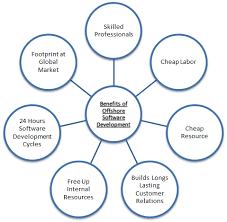The Evolution of Software Development: Navigating the SDLC Waterfall Model
Understanding the SDLC Waterfall Model
The Software Development Life Cycle (SDLC) is a process used by software development teams to design, develop, and test high-quality software products. One of the traditional models of SDLC is the Waterfall model.
What is the Waterfall Model?
In the Waterfall model, the software development process is divided into sequential phases that flow downwards like a waterfall. Each phase must be completed before moving on to the next one, and there is no turning back once a phase is finished.
Phases of the Waterfall Model:
- Requirements Gathering: In this phase, project requirements are collected from stakeholders.
- System Design: The system architecture and design are planned based on gathered requirements.
- Implementation: The actual coding and programming of the software take place in this phase.
- Testing: The developed software is tested for bugs and errors.
- Maintenance: Once testing is successful, the software is deployed, maintained, and updated as needed.
Advantages of the Waterfall Model:
- Simplicity: The sequential nature of the model makes it easy to understand and manage.
- Certainty: Each phase has specific deliverables and criteria for completion, providing clarity on project progress.
- Ease of Documentation: Documentation can be created at each stage, ensuring traceability and accountability.
Disadvantages of the Waterfall Model:
- Rigidity: Lack of flexibility can lead to difficulties in accommodating changes late in the development process.
- No Early Prototyping: Stakeholders may not see a working product until late in the cycle, risking misalignment with expectations.
- Risk Management: Identifying risks early may be challenging due to limited feedback until later stages.
In conclusion, while the Waterfall model offers structure and clarity in software development projects, its rigidity can pose challenges when requirements change or evolve. It remains a valuable approach for projects with well-defined and stable requirements where predictability is crucial.
5 Essential Tips for Effectively Implementing the Waterfall SDLC Model
- Clearly define and document requirements at the beginning of the project.
- Follow a sequential approach with distinct phases such as planning, design, implementation, testing, and maintenance.
- Ensure thorough testing at each stage to catch defects early in the process.
- Obtain customer feedback at key milestones to validate progress and requirements.
- Document all aspects of the project thoroughly for future reference and maintenance.
Clearly define and document requirements at the beginning of the project.
Clear and thorough definition and documentation of project requirements at the outset of a software development project is crucial in the Waterfall model of the Software Development Life Cycle (SDLC). By clearly outlining the scope, functionalities, and objectives of the project from the start, stakeholders can ensure alignment and understanding among all team members. This practice helps minimize misunderstandings, reduce rework, and establish a solid foundation for subsequent phases of development. Additionally, well-defined requirements serve as a reference point throughout the project, guiding decision-making and ensuring that the final product meets expectations effectively.
Follow a sequential approach with distinct phases such as planning, design, implementation, testing, and maintenance.
To effectively implement the Waterfall model in the Software Development Life Cycle (SDLC), it is essential to adhere to a sequential approach comprising distinct phases. Beginning with meticulous planning, followed by detailed design, precise implementation, thorough testing, and ongoing maintenance, each phase plays a crucial role in ensuring the success of the project. By following this structured sequence of activities, teams can maintain clarity, accountability, and progress tracking throughout the development process, ultimately leading to the delivery of high-quality software products.
Ensure thorough testing at each stage to catch defects early in the process.
To optimize the Software Development Life Cycle (SDLC) Waterfall model, it is crucial to emphasize thorough testing at every stage of the process. By conducting comprehensive testing throughout each phase, teams can identify and rectify defects early on, preventing them from escalating into more significant issues later in the development cycle. This proactive approach not only ensures a higher quality end product but also contributes to smoother project progression and timely delivery.
Obtain customer feedback at key milestones to validate progress and requirements.
Obtaining customer feedback at key milestones in the SDLC Waterfall model is crucial to validate progress and ensure that the project aligns with customer requirements. By involving customers throughout the development process, teams can address any discrepancies early on, leading to a product that meets or exceeds expectations. This feedback loop not only validates the work done so far but also provides valuable insights for making necessary adjustments and improvements, ultimately enhancing the overall quality of the final product.
Document all aspects of the project thoroughly for future reference and maintenance.
It is essential to document all aspects of the project thoroughly during the Software Development Life Cycle (SDLC) Waterfall model to ensure future reference and maintenance. Comprehensive documentation helps in understanding the project’s requirements, design, implementation details, and testing procedures. It serves as a valuable resource for developers, testers, and maintenance teams when addressing issues, making updates, or adding new features to the software. Proper documentation enhances project transparency, facilitates knowledge transfer among team members, and contributes to the overall success and efficiency of the software development process.





